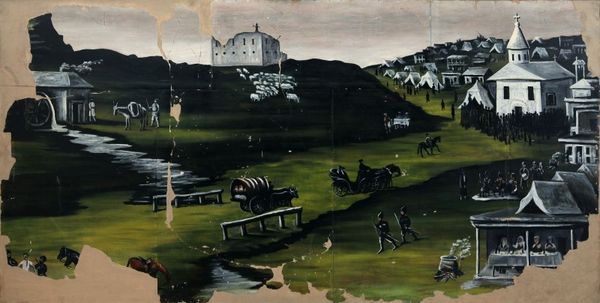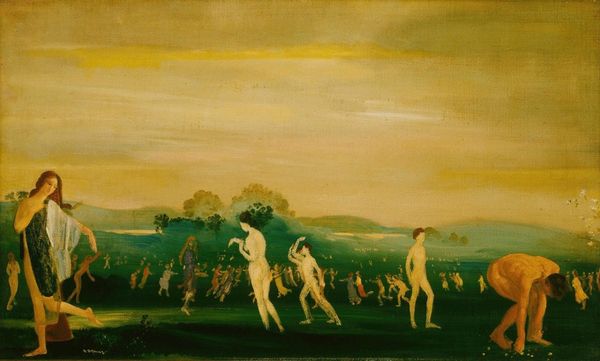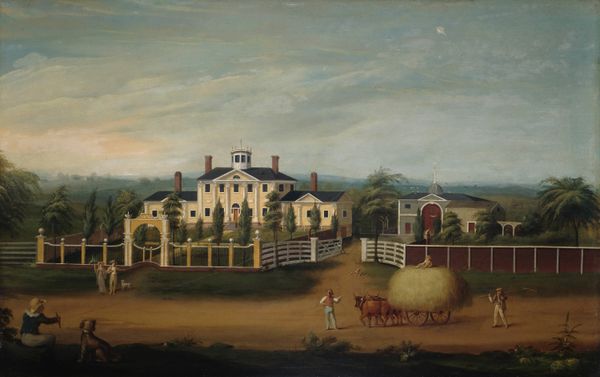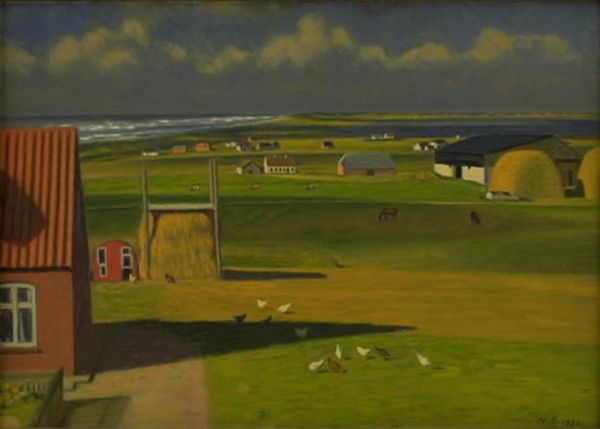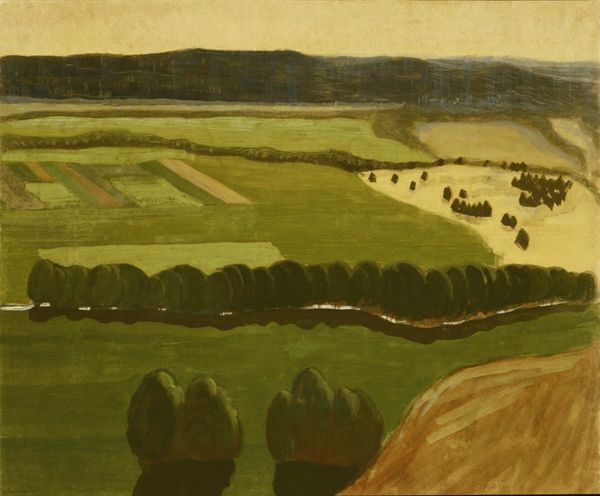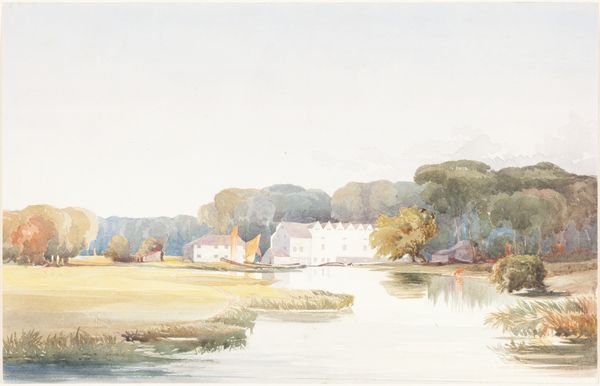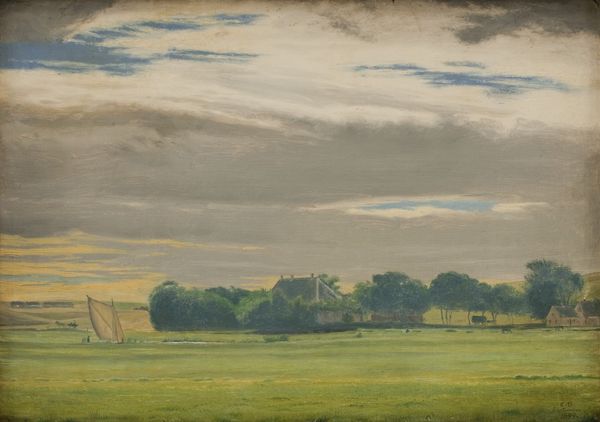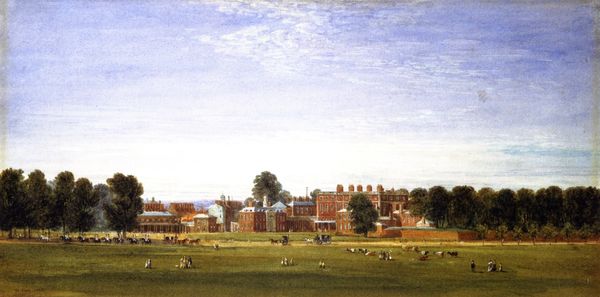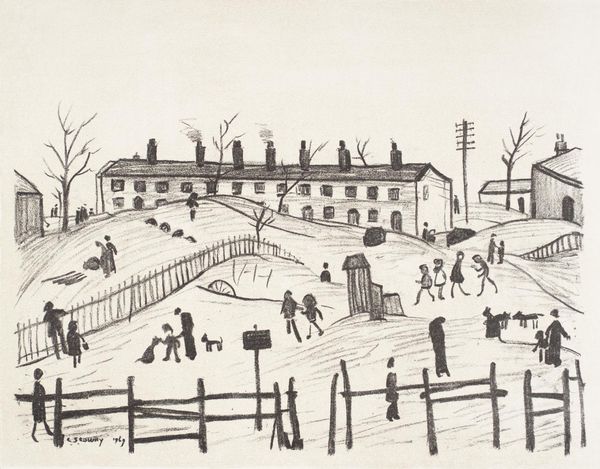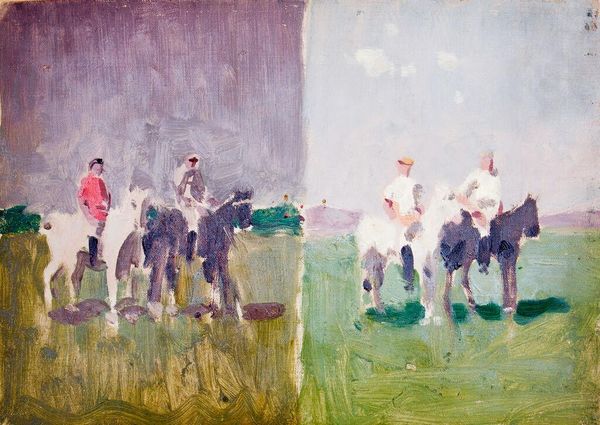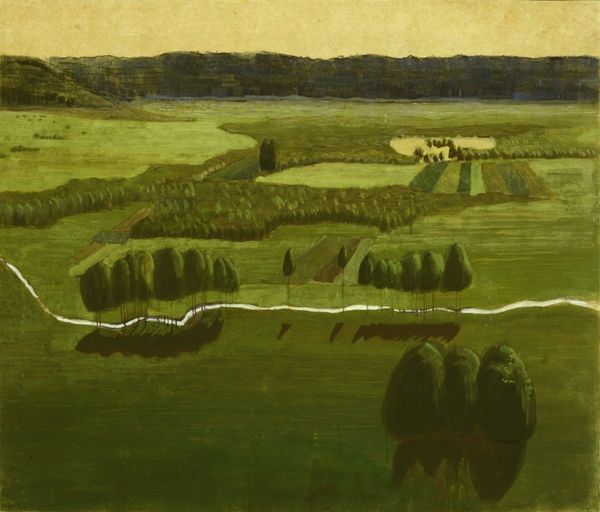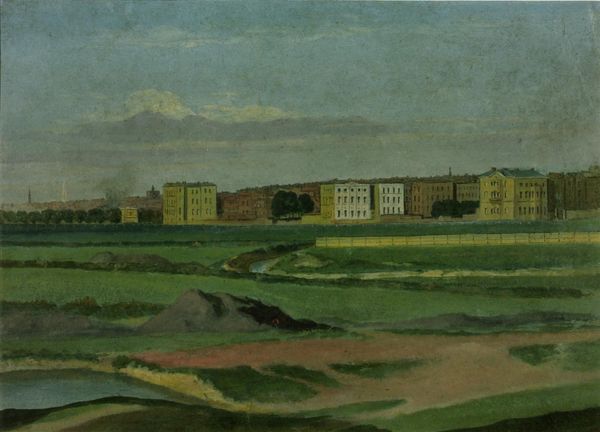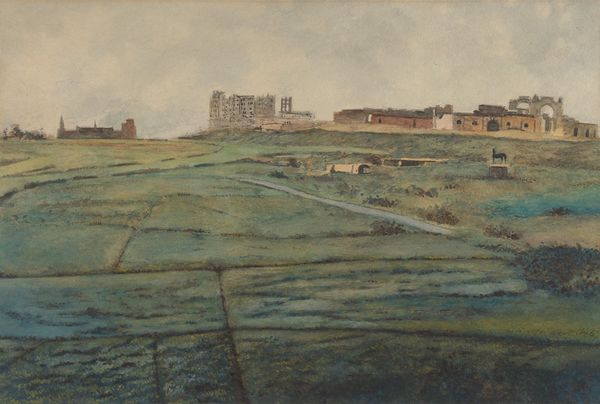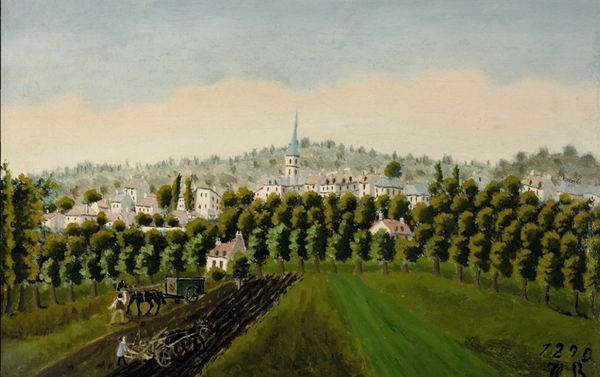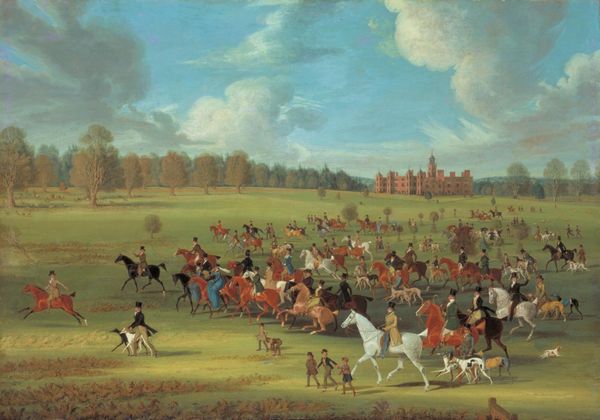
Dimensions: overall: 64.1 x 122.2 cm (25 1/4 x 48 1/8 in.) framed: 74.3 x 132.1 x 4.6 cm (29 1/4 x 52 x 1 13/16 in.)
Copyright: National Gallery of Art: CC0 1.0
Curator: Here we have Francis Alexander's "Ralph Wheelock's Farm," an oil painting dating from around 1822. What's your initial take on this depiction? Editor: My first impression is its stillness. There’s activity, people laboring, but there's an odd quiet about it all, likely linked to the deliberate application of paint on that canvas, giving the forms definition with tight details that evoke its making process. Curator: Indeed. This is more than a simple record; it evokes potent images of agrarian virtue and self-sufficiency. Observe the placement of the house, central and solid—an enduring monument to colonial enterprise, positioned against the landscape itself as a marker of control. Editor: Interesting. To me, the emphasis is less on control and more on labor. Look at those meticulously rendered haystacks and the figures actively at work; that represents labor, the constant to and fro of agricultural cycles. The canvas looks unprimed, further heightening that immediacy. What materials would they have had at their disposal? How would the artist be trading with local craftsmen to obtain what was needed for the painting process? Curator: A compelling material reading. But don’t you see the undercurrents? The rather imposing gray sky, which contrasts rather aggressively against the labors of people in the fields; it lends an almost Biblical weight to the image. Could we suggest it is evoking some narrative? Editor: Or perhaps, given the painting's possible function for Wheelock himself, the emphasis falls back on the simple act of depicting the everyday, through these figures who demonstrate various movements of labor within an available medium that the artist could harness effectively at that specific time. Curator: I'd also emphasize that in terms of American self-construction, especially concerning the symbolism of the republic and expansionism, these serene pastoral settings—even with an oncoming storm overhead—signaled the promise of land and prosperity available to the ambitious and diligent individual. Editor: An ambition manifested, perhaps, not just in the landscape depicted, but in Alexander’s labor too, painstakingly applying the paint, creating an object for his patron that memorializes place and production. The way Alexander uses the paint—there is great intentionality. Curator: So, in closing, this painting is far from a straightforward landscape, but one with subtle and conflicting narratives about settlement, productivity, labor, and perhaps the sublimity of nature and weather. Editor: Precisely. It's a convergence of social processes and the application of practical knowledge, as visible in the artist's and workers' acts of creation that converge.
Comments
No comments
Be the first to comment and join the conversation on the ultimate creative platform.
